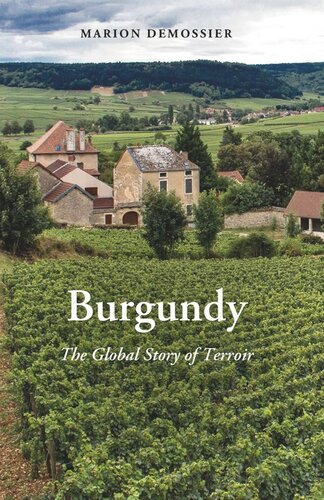

Most ebook files are in PDF format, so you can easily read them using various software such as Foxit Reader or directly on the Google Chrome browser.
Some ebook files are released by publishers in other formats such as .awz, .mobi, .epub, .fb2, etc. You may need to install specific software to read these formats on mobile/PC, such as Calibre.
Please read the tutorial at this link: https://ebookbell.com/faq
We offer FREE conversion to the popular formats you request; however, this may take some time. Therefore, right after payment, please email us, and we will try to provide the service as quickly as possible.
For some exceptional file formats or broken links (if any), please refrain from opening any disputes. Instead, email us first, and we will try to assist within a maximum of 6 hours.
EbookBell Team

4.4
52 reviews“Demossier’s engrossing analysis of Burgundy—the wine, the place, the brand—should be imbibed (pun intended!) on many levels—and slowly, for best appreciation.”—foodanthro.com
Drawing on more than twenty years of fieldwork, this book explores the professional, social, and cultural world of Burgundy wines, the role of terroir (the environmental factors that affect a crop's character), and its transnational deployment in China, Japan, South Korea, and New Zealand.
It demystifies the terroir ideology by providing a unique long-term ethnographic analysis of what lies behind the concept. While the Burgundian model of terroir has gone global by acquiring UNESCO world heritage status, its very legitimacy is now being challenged amongst the vineyards where it first took root.
From the introduction:
Superficially then, Burgundy might appear to be simply acquiring recognition for its unchanging landscape, tradition and culture. Yet, for all the power of its rich local identity, folklore and culture which is broadcast to the world, there hides underneath the comforting blanket of this seamless place, untouched by change or conflict, a far more complex reality. Burgundy’s listing as a World Heritage landscape emphasises its international reputation as a traditional and historical site of wine production and opens a new chapter in the production and marketing of its quality, differentiation and authenticity. It is also about readjusting Burgundy and the grands crus in response to a changing global market and the shifting kaleidoscope of world wine values.